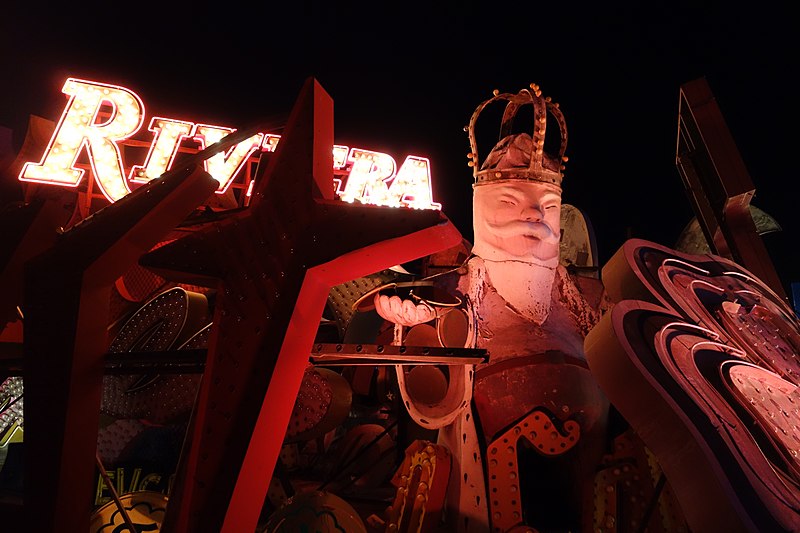Las Vegas is famous for its dazzling neon signs that have adorned the city’s skyline for decades. These iconic signs are not only a testament to the city’s vibrant history but also a brilliant example of the science behind neon lighting. In this article, we’ll take a deep dive into the history of neon signs in Las Vegas, their cultural significance, and the science that makes them glow.
Las Vegas is often referred to as the “Entertainment Capital of the World,” and its vibrant neon signs are an integral part of its identity. These signs not only light up the city but also tell the story of its evolution. Let’s explore the science behind the lights and the history of neon in Las Vegas.
The Birth of Neon Signs
The history of neon signs in Las Vegas can be traced back to the 1930s when the city was experiencing a tourism boom. Local businesses and casinos sought unique ways to attract visitors, and neon signs emerged as a captivating solution. The bright, colorful, and attention-grabbing nature of neon made it the perfect medium for signage.
The Neon Boneyard: A Museum of History
The Neon Boneyard is a unique museum in Las Vegas that houses retired neon signs from the city’s past. This outdoor museum provides a fascinating journey through time, showcasing signs from iconic hotels, bars, and businesses. It’s a place where the history of Las Vegas and the art of neon signs come to life.
The Cultural Significance of Neon Signs
Neon signs in Las Vegas hold cultural significance beyond their commercial utility. They have become symbols of the city’s glitz and glamour, as well as its constant evolution. Iconic signs like the “Welcome to Fabulous Las Vegas” sign and the Stardust sign have become part of the city’s cultural fabric.
How Neon Lights Work
At the heart of neon signs is the science of noble gases. Neon gas, which gives the signs their name, is contained in glass tubes. When an electrical current passes through the gas, it emits light. Different gases and phosphor coatings can create a wide range of colors, adding to the visual appeal of the signs.
Design and Artistry in Neon Signs
Creating a neon sign is a delicate art. Skilled artisans, known as neon benders, shape the glass tubes into the desired shapes and letters. The design of a neon sign requires meticulous planning, and it can take weeks or even months to complete a complex piece.
Preserving the Neon Legacy
As technology advances, many neon signs are being replaced by LED signs, which are more energy-efficient and durable. However, the Neon Museum and other preservation efforts are dedicated to ensuring that the neon legacy of Las Vegas lives on. These efforts involve the restoration and maintenance of vintage signs, preserving them for future generations.
Visiting the Neon Sign Museum
A visit to the Neon Boneyard is like stepping into a time machine. Visitors can take guided tours to explore the history of Las Vegas through its neon signs. It’s an opportunity to appreciate the artistry, craftsmanship, and cultural significance of these iconic signs.
The neon signs of Las Vegas are not just symbols of a bustling city; they are the result of a fascinating fusion of art and science. From the noble gases that illuminate the signs to the skilled artisans who create them, neon signs tell a story of innovation, creativity, and a city that has always been at the forefront of entertainment.
Frequently Asked Questions (FAQs)
1. Are all the signs at the Neon Boneyard operational?
No, many of the signs at the Neon Boneyard are no longer operational. Some are restored to their original glory, while others remain as historical artifacts.
2. Are neon signs still being created in Las Vegas?
While many vintage signs have been replaced by LED technology, there is still a demand for new neon signs, especially in areas of the city that want to maintain the classic Las Vegas look.
3. What is the process of restoring a vintage neon sign?
Restoring a vintage neon sign involves cleaning, repairing or replacing broken or damaged components, and ensuring that the sign’s electrical systems are functioning correctly. It also often includes repainting and preserving the sign’s original design.
4. Can I take photographs at the Neon Boneyard?
Yes, visitors are allowed to take photographs at the Neon Boneyard for personal use. However, the use of tripods and professional photography equipment may require special arrangements.
5. Are there any educational programs at the Neon Boneyard?
Yes, the Neon Museum offers educational programs and workshops for those interested in learning more about the history and art of neon signs.

